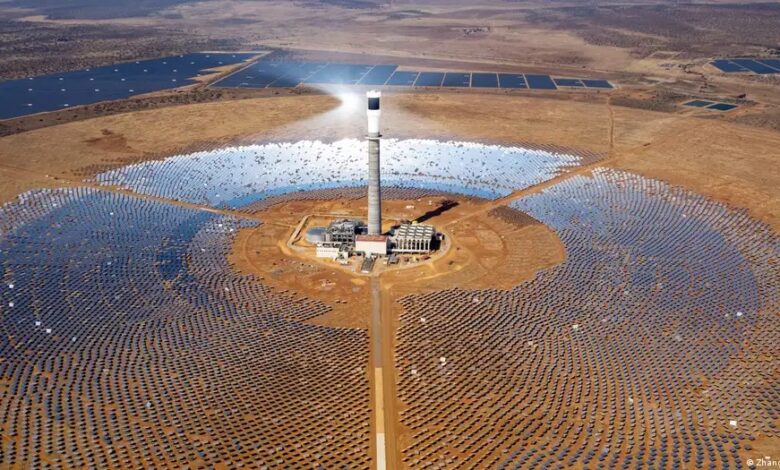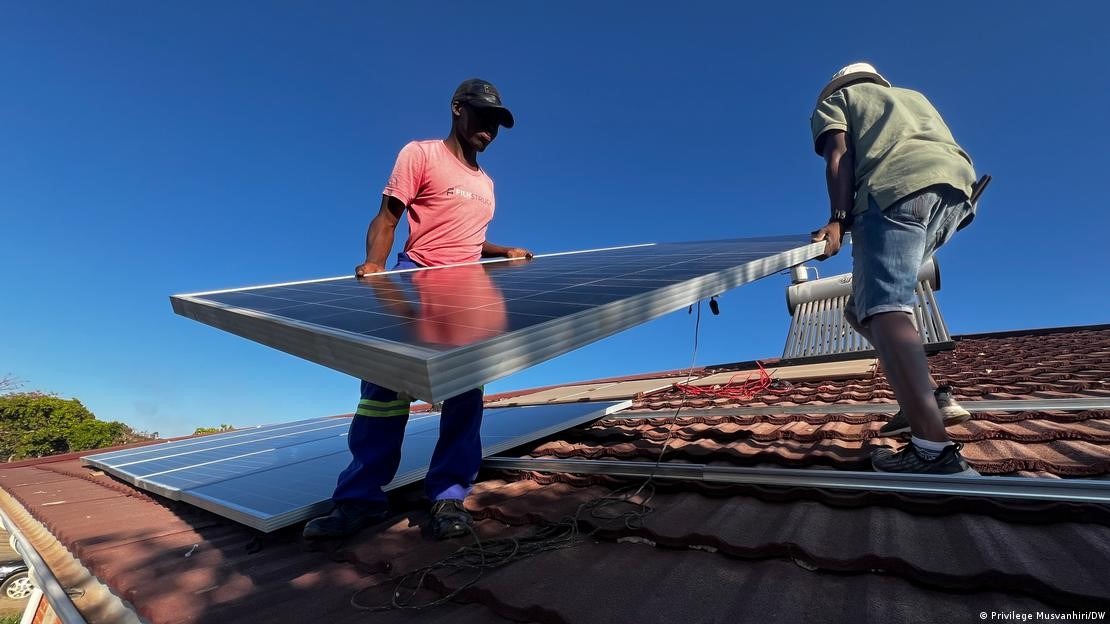
Africa’s solar energy transformation is accelerating after years of slow growth, with several indicators showing that the continent is finally gaining momentum in large-scale renewable electrification.
For decades, experts have argued that solar power is a natural fit for Africa due to abundant sunshine, growing economies, and expanding energy needs. Today, that prediction is beginning to materialize.
Recent data from the International Renewable Energy Agency (IRENA) shows that solar energy has become one of the world’s cheapest power sources. The global cost of solar photovoltaic (PV) electricity has dropped dramatically — about 90% in just 13 years—bringing the price down to only $0.044 per kilowatt-hour. Yet despite these favorable economics, Africa has historically lagged behind, with just over 18 gigawatts of installed solar capacity, barely 1% of the global total, according to dw.com
Much of this limited progress has been due to barriers such as insufficient investment capital and weak grid infrastructure. But signs now point to a major shift. A significant surge of Chinese-made solar equipment has been flowing into African markets over the past year, dramatically expanding access to affordable technology.

An analysis by British think tank Ember found that China shipped 15 gigawatts of solar panels to Africa within a single year—almost equivalent to the entire capacity installed on the continent over decades. John van Zuylen, CEO of the Africa Solar Industry Association (AFSIA), says this surge reflects a strong and growing appetite for solar solutions across Africa.
AFSIA estimates that Africa’s total installed solar capacity since 2000 may reach 75 gigawatts—far higher than IRENA’s figure—because many small-scale, off-grid systems are never officially reported. Even so, the recent annual influx of 15 gigawatts underscores an unprecedented acceleration.
Some of this new capacity includes large national projects, such as Algeria’s recent 3-gigawatt program. But van Zuylen notes that solar adoption is also strengthening across sub-Saharan Africa in countries such as Zambia, Rwanda, Senegal, Côte d’Ivoire, and particularly Nigeria. He predicts Nigeria may soon become Africa’s top solar market, as soaring diesel costs push households and businesses toward cheaper solar alternatives.

New players are also entering the clean energy space. Liberia, for instance, is expanding beyond its traditional reliance on hydropower. Emmanuel K. Urey Yarkpawolo of Liberia’s Environmental Protection Agency recently announced that the country’s first major solar park—producing up to 20 megawatts—will soon come online, with more projects in the pipeline.
In West Africa’s Sahel region, countries like Niger are experiencing a solar boom after electricity supplies from neighboring Nigeria were cut due to ECOWAS sanctions. Solar panels now line markets and streets as households and businesses search for alternatives.
Some analysts link Africa’s solar surge to ripple effects from the US-China trade war. Facing high tariffs and restrictions from Western markets, Chinese producers began offloading equipment at lower prices in Africa. Zimbabwean solar entrepreneur Fawen Nyakudya says the conflict pushed Chinese vendors to offer more competitive deals: “When the trade war started, the cost of equipment went down. The Chinese were desperate to offload.”
Millions in sub-Saharan Africa—about 565 million people—still lack electricity, according to the World Bank. Economists like Kenya’s James Shikwati argue that any geopolitical event that makes solar technology cheaper is a net benefit for Africans seeking affordable, reliable power.
Africa also imports some solar equipment from India, but Chinese panels remain the most favored due to price advantages. Recently, however, supply shortages have emerged as Chinese suppliers hold back inventory to stabilize profits, creating temporary scarcity of panels and lithium batteries in some markets.
Despite these challenges, advancements in storage technology are making solar more practical than ever. Lithium batteries have become affordable enough for households and utilities alike, allowing solar energy to be stored for use during peak evening hours. Net metering—where consumers sell excess electricity back to the grid—has further boosted demand, significantly increasing returns on rooftop solar investments in countries like Kenya, Namibia, and Zimbabwe.
Yet hurdles remain. Shipping fees and import duties inflate costs in many countries. Zimbabwe, for example, imposes taxes that raise panel prices, whereas Zambia has eliminated duty fees, reducing import costs from as high as $20,000 elsewhere to just $26. Many experts argue that taxing solar imports makes little sense in nations that do not manufacture panels locally.
Despite bureaucratic and financial obstacles, long-term economics still favor rapid solar expansion. A recent project in Mauritius that combines solar generation with battery storage delivers power at just $0.07 per kilowatt-hour—an extremely competitive rate. As van Zuylen puts it, “When you reach those price points, it becomes a no-brainer. You need electricity, you need it at a decent price—yes, you go for it.”













